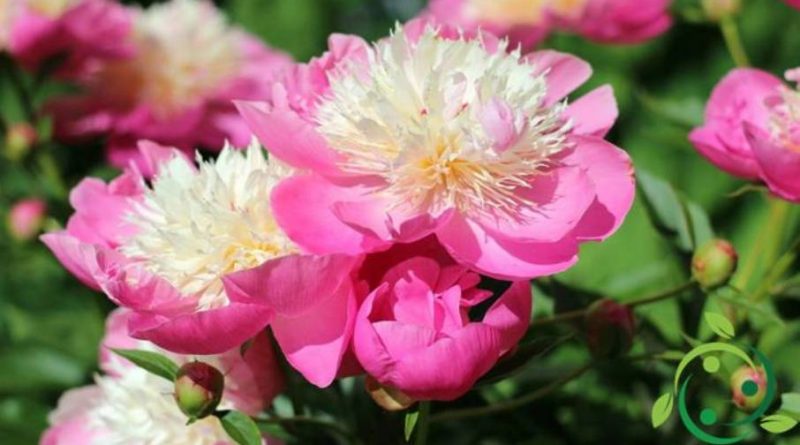How to grow Peony
How to grow Peony
La Pæonia (Peony L., 1753) is the only genus of the Peonycee family and includes both perennial herbaceous species also with tuberous roots up to 1 m tall, and deciduous leaves shrubs up to 2 m tall, with very colorful and fragrant blooms. . The peonies are mainly cultivated for ornamental uses in gardens to form flowerbeds and flowering spots on grassy lawns, or even in pots on balconies and terraces, also remember that the many vegetable varieties with single or double flower, of various colors, are grown by companies specialized for the production of cut flower. The peony can also be cultivated as a medicinal plant due to its medicinal properties. In this contribution we see how to cultivate Peony. In floriculture the most used species as ornamental plants are divided into two groups:
– Herbaceous peonies; these include the varieties that derive from the Peonia officinalis (of European origin), which have non-perfumed flowers, and from the Peony lactiflora (of Siberian origin), which have flowers with pink scent, with colors from white to red;
– Woody or arboreal peonies (originating in China), which are rather rustic plants, easy to grow, even in continental climates and very resistant to summer drought, with abundant spring blooms.
Peonies are generally plants that are easy to grow. They must be grown with exposures in full sun or, at the limit, in partial shade. The cultivation substrate must be neutral or slightly acidic, with very low limescale content and abundant organic fertilization. For peonies, especially for cut flower crops, mulch is used with well-mature bovine manure. Irrigation should be done with good frequency but always being careful not to create stagnations that could cause rottenness. Peonies multiply at the end of the autumn season by dividing the old tufts, taking care to leave an eye for each portion. The sowing is instead rarely used, at least for ornamental and amateur purposes, as it requires long times of cultivation before arriving at the plant well formed and able to give a good and abundant flowering. The multiplication by division of the radical tufts is more difficult; this is an extremely delicate operation and must be carried out with the utmost care, in conditions of controlled temperature and humidity and therefore in a possibly protected environment. The flowering of the peony will be obtained in a full and abundant way from the second or third year from the plant. The period of flowering begins with the first warm spring, with flowers of considerable size and many colors. Peonies are available in practically all shades.
In the cultivation of the Peony it is appropriate to allocate, if grown on the garden, a place far enough from the roots of other plants, as they do not tolerate well the competition with other plants and in such a way as to leave them a sufficient growth space. Moreover, as regards the woody or arboreal peonies, which flower abundantly in the first warm spring, it is necessary to have the foresight not to drastically cut them.
Among the adversities of the Peony we remember the leafy Anguillosi; in this case the leaves, attacked by the nematodes of the species Aphelenchoides olesistus, appear chlorotic and translucent, subsequently they rot or dry; plants affected by this adversity do not flower or have poor and stunted blooms. Also the gray mold due to Botrytis paeonia and Botrytis cinerea; these two mushrooms can cause the rot of the jets; they darken and become grayish mold. Often this latter adversity is due to poor lighting conditions and excessive humidity.

